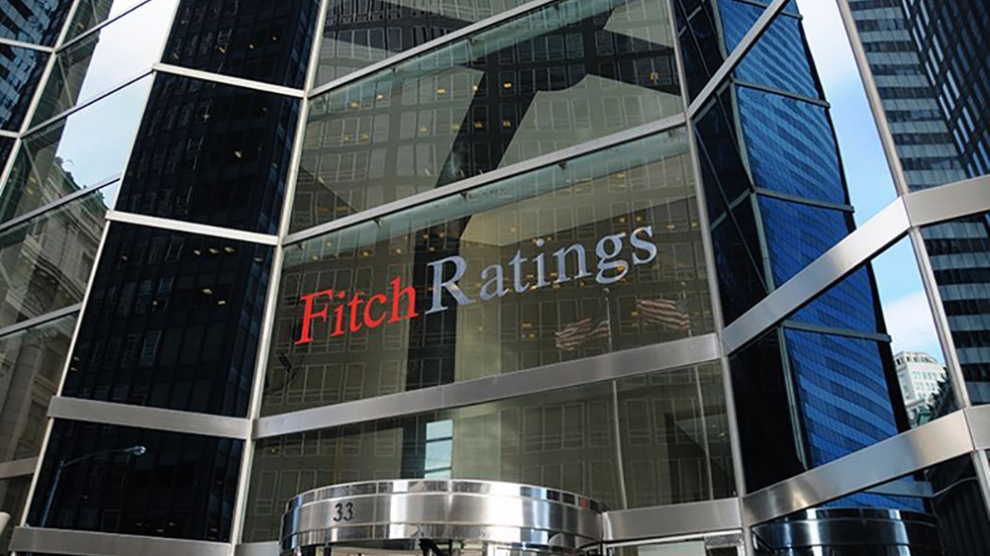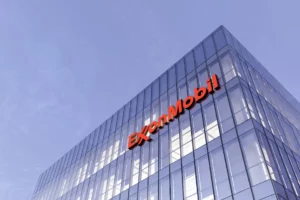
(Fitch Ratings, 1.May.2023) — Fitch Ratings has affirmed Freeport LNG Investments, LLLP‘s (FLNGI) Long-Term Issuer Default Rating (IDR) at ‘B-‘ and secured debt rating at ‘B’/’RR3’. The ratings were removed from Rating Watch Negative (RWN) where they were placed on 22 June 2022 and assigned a Negative Rating Outlook.
The RWN resolution reflects the partial resumption of operations at Freeport Development L.P.’s (Freeport LNG) liquified natural gas (LNG) facilities, marking a major milestone. The plants have been offline since June 2022 following the ignition of a natural gas vapor cloud from a ruptured LNG transfer line at the Texas LNG facility. FLNGI is structurally subordinated to several levels of senior secured debt instruments that have cash traps. The cash traps at the operating subsidiaries and holding company stopped all dividends to FLNGI and debt service payment have been owner equity funded.
Fitch will continue to evaluate operational and financial matters regarding FLNGI’s liquidity condition and if long-term cash flows can return to levels incorporated into the prior ‘B’ IDR.
KEY RATING DRIVERS
Partial Restart Completed: Train 3 resumed operations in February 2023, and the company has regulatory approval to restart Train 2, following the completion of Phase 1 construction in 2022. Management’s most recent expectation is the three LNG trains will restart operations by the end of March 2023, and full operations of all facilities will be three months later. These estimates are almost three months later than Fitch’s expectations from September 2022.
FLNGI engaged Kiewit Energy Group, a contractor with LNG construction experience, for the reconstruction. It also entered into a consent agreement with PHMSA (US Dept – Pipeline and Hazardous Materials Safety Administration). While further delays are possible given the operational complexity of a natural gas liquefaction plant, potential supply chain issues, and regulatory approvals required for resumption, Fitch believes the resumption of service is a major milestone in reaching full operations.
Addressing Cash Flow Issues: FLNGI’s main tool to mitigate catastrophic loss is a LOC-backed reserve fund equal to two quarterly debt service payments. The loan agreement also permits up to two equity cures in a consecutive four quarter period and five equity cures total. The operating subsidiaries and holding company have business interruption insurance. The quarterly debt service payments since the incident were funded by an owner equity cure. Fitch expects additional equity cures for the interest and principal payments through 2023. The lenders provided waivers for up to four additional equity cures, covering the 2023 payments.
Liquidated damages (LD) permitted under the long-term contract are being assessed. In this event, LDs are credited against invoices once production resumes and preclude distributions until the credits are settled. The resumption of partial operations will produce LNG to fulfill the foundation customer requirements and minimal excess capacity for market sales. Fitch expects 2023 debt service payments will be through equity cures and will continue to monitor FLNGI’s financial flows in making timely debt service payments.
Customers: The Freeport Plant has five long-term customers, representing almost all nameplate capacity. These customers have arrangements with the Freeport Plant for 20-year long-term agreements (LTA) under take-or-pay payment terms. The customers are large global energy companies with ratings of ‘BBB-‘ or better. Evidencing their skill set, the customers bear the risk of natural gas supply under tolling agreements.
The investigation indicated the event is not a force majeure, triggering LDs. The long-term demand for LNG remains robust, especially given concerns over energy security and acceleration of the energy transition. Given the customers’ long-term view of global energy flows, Fitch believes all five will continue to work with management under the terms of the long-term contracts and recovery plan.
Structural Subordination: The primary rating concern for FLNGI is that its sole source of revenue is dividends from the three liquefaction plants, owned by three operating companies (opcos). In parallel, FLNGI’s debt is structurally subordinate to the cash flow needs at the opcos, which have approximately $12bn of project debt. FLNGI’s debt is also structurally subordinated to an approximately $1.2bn note at FLEX Intermediate Holdco, LLC (FLEX), an intermediate holding company. FLNGI holds an indirect 63.5% limited partnership interests in FLEX.
The multiple indentures of the opcos and FLEX contain provisions preventing upstream distributions ultimately to FLNGI if debt service coverage ratios (DSCR) fall below 1.25x and 1.15x, respectively.
Low Coverage: A concern stemming from the incident is low interest coverage offsetting the expected stability of a 20-year take-or-pay payment stream from strong customers. In 2021, Fitch forecasted standalone funds flow from operations fixed charge coverage (FFO FCC) would be approximately 2.0x. The IDR had minimal cushion under the 1.5x FFO FCC threshold to trigger a negative rating action if this level was sustained, given its high leverage and deep structural subordination. Fitch expects this metric will be below 1.5x in 2022 and 2023.
Excess Capacity Sales: Once the trains are fully online, excess capacity not sold under long-term contracts provide additional revenue generating opportunities. Fitch includes the uncontracted revenues in the base case. These revenues vary based on demand, global production, weather and government policy. The market basis differential between HH gas and Title Transfer Facility, the European LNG hub, reached historic highs in 2022, and provide the basis for the operating margin for these sales.
Fitch believes that under our price deck, the upside from these sales will taper compared to the current experience and will provide additional, but volatile, revenues. Fitch will evaluate if financial performance, once the plants are fully operational in mid-2023, can return to levels consistent with Fitch’s original base case, buoyed at the margin, by these short term, market-based sales.
Consent Order: The Consent Agreement with PHMSA establishes a schedule for assessment and inspection of new operating procedures, control systems and training. While Freeport LNG functioned properly and financial flows were as forecast prior to the June 8 incident, the plants experienced operational issues during this period. Not meeting the requirements of the Consent Order may result in a change to our ESG relevance scores for Governance, Management & Strategy.
DERIVATION SUMMARY
FLNGI’s consolidated operations are supported by long-term, take-or-pay contracts to supply LNG for export. Its holding company debt structure, contract tenor and stable cash flow profile compares favorably with midstream energy peer, Cheniere Energy Inc. (CEI; BBB-/Stable). Debt obligations at both companies are secured by dividend streams derived from opcos, are subordinate to opco debt and are at risk of dividend lock-ups.
Fitch notes that FLNGI’s contract duration is similar in duration to the contracts at Cheniere‘s wholly owned operating subsidiaries, Sabine Pass Liquefaction (SPL) and Cheniere Corpus Christi Liquification (CCL), averaging 17 years remaining. The contracts at both operators are with investment grade counterparties. Operationally, CEI is a seasoned operator compared to FLNGI. CEI’s has nine liquefaction trains with 45 metric tonnes per annum (mtpa) of capacity, operating since 2016 and 2018, respectively, at SPL and CCL. It has implemented debottlenecking processes to improve capacity and are proven to be reliable. In contrast, FLNGI’s three liquefaction trains with 15 mtpa capacity have been online for less than two years before the incident and have not yet returned to full operations following the incident.
The main driver of the rating difference is the size and leverage. CEI’s cash flow is more than 10 times greater than FLNGI. At Cheniere, Fitch expects stabilized leverage of 4x-4.5x after 2024 compared to FLNGI’s leverage over 11.0x in 2022-2023. Fitch projects FLNGI’s leverage to decline, approaching the positive sensitivity of 7.0x, by 2024. The significantly smaller scale, level of seasoning and higher leverage at FLNGI accounts for the difference in the ratings.
KEY ASSUMPTIONS
Fitch’s Key Assumptions Within Our Rating Case for the Issuer
–Equity cure to pay the remaining quarterly coupons in 2023.
–LDs are credited against invoices when production resumes.
–Starting mid-2023, the project returns to its base case performance.
–Fitch price deck informs the short-term market prices.
–Interest expense reflects a base rate as per the Fitch Global Economic Outlook. Through the Fitch forecast, interest rate risk is limited by a high level of hedging in place since around the inception of the loans.
Fitch assumed a mid-cycle going-concern EBITDA of approximately $217mn, up from previous assumption of $212mn. Fitch calculated administrative claims to be 10%, which is the standard assumption.
For the Recovery Rating, Fitch’s estimates the company’s going-concern value was greater than the liquidation value. The going-concern multiple used was a 6.0x EBITDA multiple, which is in the range of most multiples seen in recent reorganizations in the energy sector. There have been a limited number of bankruptcies within the midstream sector.
Two recent gathering and processing bankruptcies of companies indicate an EBITDA multiple between 5.0x and 7.0x, by Fitch’s best estimates. In its recent Bankruptcy Case Study Report, “Energy, Power and Commodities Bankruptcies Enterprise Value and Creditor Recoveries”, published in September 2021, the median enterprise valuation exit multiple for the 51 energy cases with sufficient data to estimate was 5.3x, with a wide range of multiples observed.
RATING SENSITIVITIES
The Negative Outlook may be revised to Stable when the company has received all required regulatory approvals and operations are fully restored and sustained without incident.
Factors that could, individually or collectively, lead to positive rating action/upgrade:
–FLNGI distributions received are expected to be restored to near-normal levels in line with those forecast before the incident.
–An increase in dividends to FLNGI that results in leverage, as measured by expected standalone total debt to distributions, decreasing below 7.0x on a sustained basis;
Factors that could, individually or collectively, lead to negative rating action/downgrade:
–Any significant diminution of FLNGI’s currently strained liquidity resources. A negative rating action related to this sensitivity may potentially include a multiple-notch downgrade.
–Any significant shortfall against Fitch’s expectations for hitting milestones related to bringing the Freeport Plant back to an operating condition approximately the same as had been achieved in 1Q22.
–A multi-notch downgrade or financial distress of any LTA counterparty.
–An increase in debt at the opcos or FLEX.
–FFO fixed-charge coverage sustained below 1.5x, or other conditions that raise a concern for liquidity.
BEST/WORST CASE RATING SCENARIO
International scale credit ratings of Non-Financial Corporate issuers have a best-case rating upgrade scenario (defined as the 99th percentile of rating transitions, measured in a positive direction) of three notches over a three-year rating horizon; and a worst-case rating downgrade scenario (defined as the 99th percentile of rating transitions, measured in a negative direction) of four notches over three years. The complete span of best- and worst-case scenario credit ratings for all rating categories ranges from ‘AAA’ to ‘D’. Best- and worst-case scenario credit ratings are based on historical performance. For more information about the methodology used to determine sector-specific best- and worst-case scenario credit ratings, visit https://www.fitchratings.com/site/re/10111579.
LIQUIDITY AND DEBT STRUCTURE
Challenged Liquidity but Stable: FLNGI’s liquidity consists of a LOC to fund a debt service reserve equal to six months of debt service under both the term loan A and term loan B. The reserve is part of the collateral package of FLNGI, and supports a shortfall in cash fall to pay debt service in the case of calamitous events. If drawn, the obligation to repay the letter of credit is an obligation of FLNGI. The LOC is fully available.
While FLNGI’s debt is structurally subordinate to the opco and FLEX debt, the next upcoming maturity is FLNGI’s $1.2bn term loan A due December 2026, followed by the $1.2bn term loan B due in December 2028. Both loans feature amortizations before final maturity. The LTAs remain in place until 2038 and will generate stable cashflow to support refinancing of the loans in 2026 and 2028.
ISSUER PROFILE
Freeport LNG Investments, LLLP holds Mr. Michael Smith’s 55.25% limited partnership interest in Freeport LNG Development L.P (FLNG). FLNG operates an approximately 15 mtpa natural gas liquefaction and LNG export facility consisting of three 5+ mpta trains located near Freeport, TX.
SUMMARY OF FINANCIAL ADJUSTMENTS
Fitch utilizes combined financial statements of Freeport LNG Investments, LLLP (FLNGI) and FLNGI Option HoldCo, LLC collectively to evaluate FLNGI. Additionally, Fitch adjusts the financial statements to reflect the dividends from Freeport Development as revenue. As an equity owner of Freeport Development, dividends to FLNGI are reported on the cash flow statement as “Distributions from Freeport LNG Development, L.P.” not operating revenue. Fitch views FLNGI’s financial condition by, among other methods, looking at standalone, or de-consolidated HoldCo, credit metrics and proportional consolidation metrics.
____________________

